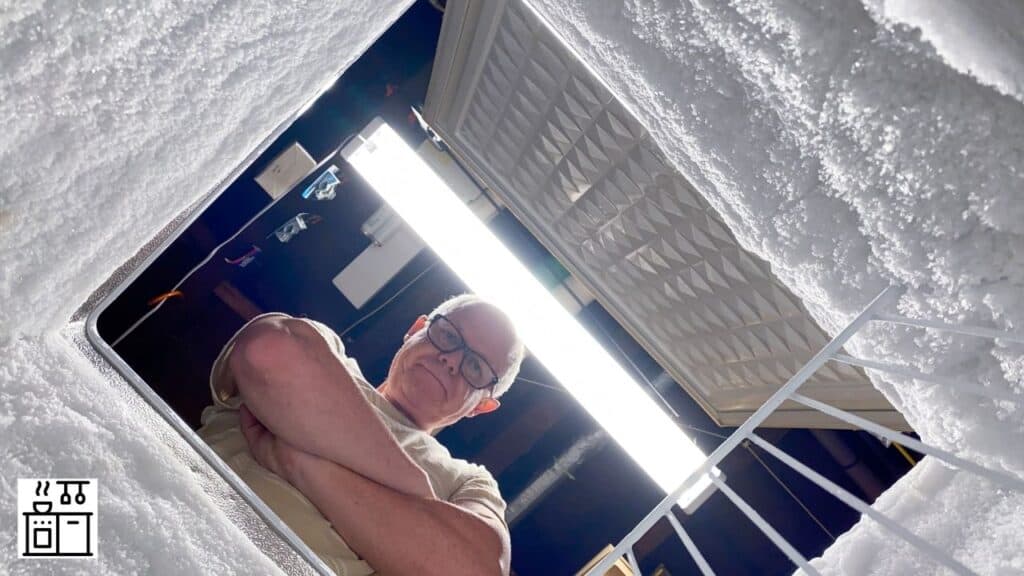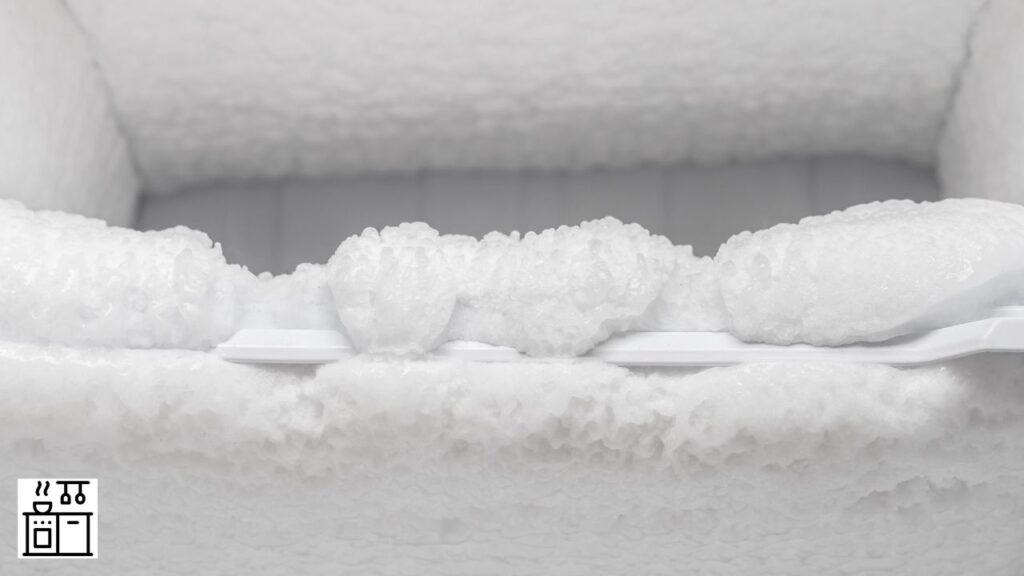The accumulation of ice in the freezer is a real pain. The process of manually defrosting a freezer is such a hassle that it raises the question, do freezers defrost themselves?
Whether freezers defrost themselves or not depends on the type of freezer. There are freezers that can self-defrost and freezers that need manual defrosting. Both these types of freezers have their own advantages and disadvantages. Depending on your requirements, you may prefer one over the other.
In this article, we’ll tell you the differences between both types of freezers and how you can manually defrost your freezer without much of a hassle.
Do All Freezers Defrost Themselves?
While many freezers can automatically defrost, not all freezers do.
There are two types of freezers: self-defrosting freezers and manual defrosting freezers.
A self-defrosting freezer, as the name suggests, automatically defrosts itself. It doesn’t need physical work.
However, manual defrosting freezers need you to defrost them.
Unfortunately, that process takes a long time and quite a bit of effort.
That being said, each type of freezer has its own set of advantages and disadvantages.
Self-Defrosting Freezer vs. Manual Defrosting Freezer
Manual and self-defrosting refrigerators each offer their own set of benefits and drawbacks.
You might prefer one over the other depending on what you’re looking for.
Let’s take a closer look at the differences.
Self-Defrosting Freezer
Self-defrosting freezers automatically remove ice without the need for manual work.
When the freezer is closed, evaporator coils are activated.
Additionally, it has fans that circulate the cold air inside the freezer.
Unlike manual freezers, most self-defrosting freezers have a front-mounted door.
They also feature shelves to make organizing the items inside easier and more practical.
Advantages of Self-Defrosting Freezers
- Defrosting occurs automatically, requiring less effort and maintenance.
- The airflow delivered by the built-in fans maintains a consistent temperature.
- The contents of the freezer won’t be harmed as the freezer won’t turn off when defrosting.
- No strong smells, thanks to the constant airflow.
Disadvantages of Self-Defrosting Freezers
- During the defrost cycle, there may be a slight temperature increase.
- They’re noisier due to the defrost cycle machinery.
- It consumes more energy.
- More expensive than manual defrost freezers.
Recommended Further Reading: How Many Amps Does A Freezer Use? | Do Freezers Produce Heat? | Do Freezers Use Freon? | Will Freezers Work In Cold Garages?
Manual Defrost Freezer
Manual defrost freezers differ from self-defrost freezers in their design.
Such freezers are kept cool by a refrigerant running through the coils in the walls and shelves.
When condensation and frost form on the freezer’s interior, they restrict air movement.
Not only that, but they also reduce the cooling rate of the coils, requiring defrosting.
Most manual freezers, unlike self-defrost freezers, lack the organizational capabilities of self-defrost freezers.
Advantages of Manual Defrost Freezers
- They use less electricity, so they’ll help you save on utility costs.
- Manual defrost freezers are substantially less expensive than self-defrost freezers. They lack all costly technologies found in self-defrost freezers.
- More uniform internal temperature.
Disadvantages of Manual Defrost Freezers:
- Defrosting takes too much time and effort.
- Because you must turn off the freezer for a few hours, your food might spoil.
- In terms of food storage, they’re less practical than self-defrosting freezers.
How Long Does It Take For A Freezer To Self-Defrost?

There’s no precise time that indicates how fast the ice will melt.
You should, however, let the freezer thaw for 24 hours.
Some freezers require less time to defrost, perhaps as little as 2 hours.
Check your owner’s handbook for detailed directions.
They mention how to defrost your freezer and specify the amount of time you should allow it to defrost.
At the very least, defrost your freezer once a year.
You should thaw your freezer more than once a year if it’s susceptible to ice build-up.
You’ll have to go through the process again when the ice sheet reaches a quarter-inch in thickness.
How to Manually Defrost A Freezer?
While the procedure is time-consuming, melting the ice in a manual defrost freezer is a simple process.
To defrost your manual defrost freezer, follow these steps:
- First, take everything out of the freezer. For the time being, store them in the fridge.
- The machine should then be unplugged before you start to defrost the freezer manually.
- Allow the ice to melt naturally at room temperature by opening the freezer’s door.
- After a few hours, you’ll need to remove all of the ice inside the freezer. Please note that the melted ice will fill the freezer with a lot of water. That being said, make sure you have towels or something similar on hand to clean it down or drain it.
- When you’re done with that, wash and dry the freezer thoroughly. Make sure the shelves are washed separately as well.
- Finally, let everything dry before plugging the freezer back. Afterward, lower the temperature to zero. Now you can put all the food back in the freezer.
To guarantee that all ice has had a chance to thaw, you should remove all of the food in the freezer and keep the freezer unplugged.
Also, make sure to leave the door open for at least one and a half to two days.
How Do You Get Rid Of Ice From A Freezer Without Turning It Off?
Sometimes, turning off the freezer isn’t the most favorable option. After all, you risk getting your food spoiled.
Fortunately, there are a few ways to defrost your freezer without turning off your device.
1. Use Boiling Water
One of the ways to remove the ice without unplugging is by using boiling water.
Remove your frozen foods from the freezer.
Place the food in the fridge, just like any other defrosting procedure.
Then, place towels on the surface of the freezer. The towels will soak the water from the ice that is melting.
Place a dish of boiling water in the freezer. Then, remove the ice with an ice-scraper.
When the bowl of boiling water becomes cool, replace it with another bowl of boiling water.
Continue this process until all of the ice has melted.
Interesting Further Reading: Do Mini Fridges Have Freezers? | Do Deep Fryers Smoke? | Why Do Dishwashers Need Salt? | Can You Make Frosting Ahead of Time?
2. Rub Alcohol
Rubbing alcohol is one of the quickest ways to melt ice.
Because rubbing alcohol has a lower freezing point than water, it can easily melt ice.
Apply some rubbing alcohol to a cloth and place it over the ice.
Alternatively, you can mix in some dish soap. Combine hot water, rubbing alcohol, and dish soap together and apply.
Using hot water will send its heat to any existing ice, eventually melting it.
This method works best when you have lighter layers of ice.
3. Exercise Caution
Many people may suggest melting the ice with a hairdryer.
While it may seem like a good concept in theory, it’s a risky practice.
You run the risk of being electrocuted. Not only that, but the inside of the freezer can get damaged easily.
So, avoid using a hairdryer at all costs.
You can use rubbing alcohol or the boiling water approach if you want a speedy solution.

